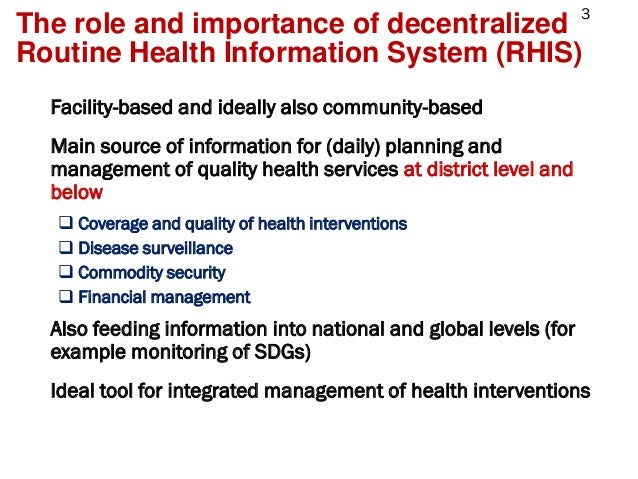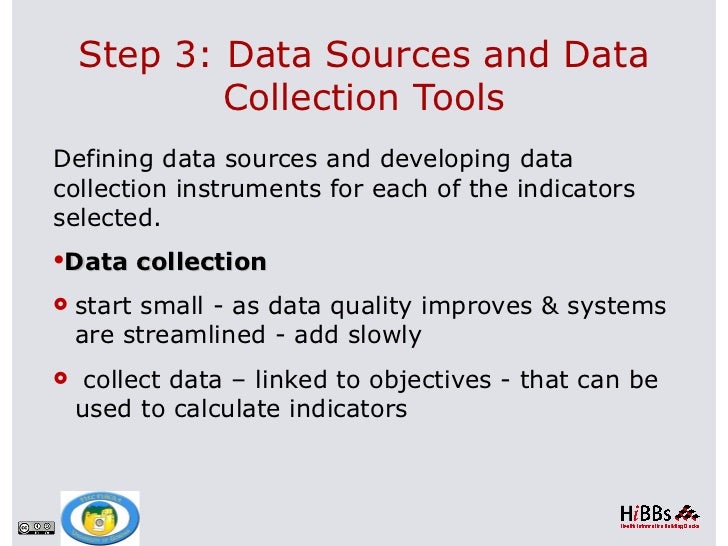5 Components Of Information Systems Britannica
The rhis provides frequent, up-to-date information on service performance at all levels of the health system, enabling regular analysis of progress and timely identification of problems. the toolkit for analysis and use of routine health facility data provides standards and guidance for analysis of rhis data for individual health programmes as. One of the mandates of the united states agency for international development (usaid)-supported measure evaluation is to strengthen the collection, analysis, and use of routine health information system (rhis) data for the delivery of high-quality health services. Routine health information systems (rhis) are defined as systems that provide information at regular intervals of a year or less to meet predictable information needs. these include paper-based or electronic health records and facilityand district-level management information systems. rhis are receiving increasing attention as an essential.
Routine health information systems to include three key factors for success: • behavioral determinants—the knowledge, skills, attitudes, values, and motivation of the people who collect and use data. • technical determinants—data collection processes, systems, forms, and methods. Routine health information systems (rhis) comprise data collected at regular intervals at public, private, and community-level health facilities and institutions and health programs. the data give a picture of routine information system health status, health services, and health resources. We developed the performance of routine information system management (prism) framework and suite of tools in 2011 for global use in assessing the reliability and timeliness of an rhis, in making evidence-based decisions, and in identifying gaps in an rhis so they can be addressed and the system can be improved.
Routine health information systems (rhis) are defined as systems that provide information at regular intervals of a year or less to meet predictable information needs. these include paper-based or electronic health records and facilityand district-level management information systems. The final, and possibly most important, component of information systems is the human element: the people that are needed to run the system and the procedures they follow so that the knowledge in the huge databases and data warehouses can be turned into learning that can interpret what has happened in the past and guide future action. Routines can be comforting. it's always nice to know you have something you enjoy to look forward to, whether it's your familiar walk to work, your daily cup of coffee, or your bedtime routine. but once in a while, it's helpful to switch up.
Introduction to routine health information system slides 1. introduction to routinehealth information systems desalegn tegabu zegeye (md,mph) department of health informatics university of gondar february 2011 hibbs is a program of the global health informatics partnership. Learn how to establish your own daily cleaning and organization routine to make the most out of your time. get ideas on how to become more efficient and keep your home clutter free.
A well-functioning routine health information system (rhis) can provide the information needed for health system management, for governance, accountability, planning, policy making, surveillance and quality improvement, but poor information support has been identified as a major obstacle for improving health system management. While doctors may never agree on a “best” workout to improve heart health, they will all attest to the fact that fitness is a powerful and effective way of combating cardiac disease. of course, exercise only works when a person is willing t. Management information systems use simple routines like summaries and comparisons which enable managers to take decisions for which the procedure of reaching a solution has been specified in advance. generally, the format of reports produced by mis is pre-specified. a typical mis report is a summary report, such as a report on the quarterly. Rhino, the routine health information network, works for better health through the use of information produced by high quality, sustainable routine health information systems. our network thrives on the contributions and enthusiasm from our members. we welcome you to share your thoughts, ideas, and experiences with rhino.
Good habits can be hard to form and bad ones hard to break, but if you know how they work you'll have an easier time making them work for you. good habits can be hard to form and bad ones hard to break, but if you know how they work you. Hospital provides details of routine and outpatient services, events, insurance information, and career and volunteer opportunities. located in routine information system greenfield. The suspension system is part of a vehicle's undercarriage, or chassis, and it has three main purposes, according to napa. the suspension supports the weight of the vehicle, it absorbs shocks and it creates the point from which the wheels a. Background: sound policy, resource allocation and day-to-day management decisions in the health sector require timely information from routine health information systems (rhis). in most lowand middle-income countries, the rhis is viewed as being inadequate in providing quality data and continuous information that can be used to help improve health system performance.
Split system training is a program of weight training that routine information system divides training sessions by body regions, usually upper and lower body training. heather black, cpt is a nasm-certified personal trainer and owner of heather black fitness & nutri. Major types of information systems 1. transaction processing systems. every firm needs to process transactions in order to perform its daily business 2. office automation systems. an office automation system (oas) is a collection of communication technology, computers, 3. knowledge work.
What Does A Suspension System Do
If you're in search of a curated guide to the best surveillance systems for your home, then you've come to the right place. outdoor and indoor surveillance is a practical and economical way to protect and secure your home. note that there i. The absence of coded inpatient diagnoses and identified data inaccuracies indicates that existing routine health information systems in public-sector hospitals in the nhi pilot districts are not yet able to sufficiently support reimbursements and resource management.
Routineinformationsystems include civil and vital statistics, medical record systems, and administrative record systems. public health information systems include population-based surveys, registries of specific outcomes, and surveillance systems. there are other examples for both routine and public health information systems, but the ones. Here are some tips on how to make makeup look good on you. rd. com beauty & routine information system fashion makeover your makeup routine © christopher robbins/digital vision/thinkstock as your skin ages, your makeup is expected to do more and more. not only must it.

Routine health information systems (also called health facility and community information systems) generate data at regular intervals (no longer than a year) that have been collected at public and private. Strong health information systems are a prerequisite to monitor progress towards the health-related sdgs and triple billion targets. who provides a toolkit for routine health facility information systems (rhis) to support countries in his strengthening through integrated modules, analysis guides and software packages. Health facilities continuously generate data as part of their service delivery activities. routine health facility data are collected and reported on a regular basis through routine health information systems (rhis). these data are analysed and used at all levels of the health system to improve access and quality of care.
The output from a transaction processing system is used as input to a management information system. the mis system analyzes the input with routine algorithms i. e. aggregate, compare and summarizes the results to produced reports that tactical managers use to monitor, control and predict future performance. Routine health information systems generate potentially useful data, but it is often of low quality and not trusted for decision making. the ultimate objective of a routine health information system (rhis) is to produce information for taking action in the health sector. “are we doing things right? ” “are we doing the right things? ”.
